On this page
Books about Vultures and CondorsThis page lists books that are totally or partially about Vultures. The books are listed in order of publication date with the most recent at the top.
Old World Vultures
Cinereous Vulture
Aegypius monachus
Lammergeier (Bearded Vulture)
Gypaetus barbatus
Palm-nut Vulture
Gypohierax angolensis
Griffon Vulture
Gyps fulvus
Indian White-rumped Vulture
Gyps bengalensis
Rüppell's Vulture
Gyps rueppelli
Long-billed Vulture
Gyps indicus
Slender-billed Vulture
Gyps tenuirostris
Himalayan Griffon Vulture
Gyps himalayensis
White-backed Vulture
Gyps africanus
Cape Vulture
Gyps coprotheres
Hooded Vulture
Necrosyrtes monachus
Egyptian Vulture
Neophron percnopterus
Red-headed Vulture
Sarcogyps calvus
Lappet-faced Vulture
Torgos tracheliotus
White-headed Vulture
Trigonoceps occipitalis
New World Vultures
Black Vulture
Coragyps atratus
Turkey Vulture
Cathartes aura
Lesser Yellow-headed Vulture
Cathartes burrovianus
Greater Yellow-headed Vulture
Cathartes melambrotus
California Condor
Gymnogyps californianus
Andean Condor
Vultur gryphus
King Vulture
Sarcoramphus papa
|
|
|
|
Vulture: The Private Life of an Unloved BirdKatie Fallon
University Press Of New England
2017
"Vulture follows a year in the life of a typical North American turkey vulture. By incorporating information from scientific papers and articles, as well as interviews with world-renowned raptor and vulture experts, author Katie Fallon examines all aspects of the bird's natural history: breeding, incubating eggs, raising chicks, migrating, and roosting. After reading Vulture: The Private Life of an Unloved Bird you will never look at a vulture in the same way again."
|
Buy from amazon.co.uk 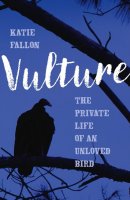
|
|
Vultures: Their Evolution, Ecology and ConservationMichael O'Neal Campbell
CRC Press
2015
"This book reexamines current knowledge on the evolution, ecology, and conservation biology of both New World vultures (Cathartidae) and Old World vultures (Accipitridae) and seeks answers to past and present regional extinctions, colorizations, and conservation questions. Extinct species of both families are examined, as is the disputed evidence for familial similarities and differences currently under review by geneticists and ornithologists."
|
Buy from amazon.co.uk 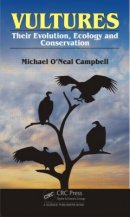
|
|
The New World VulturesNigel Hughes
2015
A short monograph with illustrations of all species produced to accompany an exhibition of paintings by the author held at Oxford University Museum of Natural History in 2015.
|
Buy from amazon.co.uk 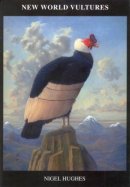
|
|
Reintroduction of Griffon Vulture Gyps fulvus in Kresna Gorge, Southwest Bulgaria 2010-2015Hristo Peshev, Emilian Stoynov, Atanas Grozdanov, Nadya Vangelova
Fund for Wild Flora and Fauna
Bilingual: Bulgarian / English
2015
"This book describes details about the reintroduction of the Griffon Vulture Gyps fulvus in Kresna Gorge, Southwestern Bulgaria in the period 2010-2015. Data about releases, breeding attempts, seasonal dynamics, dispersal, mortalities, other attracted species and conservation decisions and challenges are provided."
|
 |
|
Back from the BrinkMalcolm Smith
Whittles Publishing
2015
"Back from the Brink is an antidote to a world that seems full of stories of wildlife doom and gloom. Amongst all the loss of habitat and the animals and plants that are in spiralling decline, it's easy to forget that there are a huge number of positive stories too; animals threatened with extinction, such as the gigantic European Bison - extinct in the wild - having their fortunes reversed and their futures secured. This is the story of some of these successes." The book comprises fifteen chapters each covering a specific species or groups of species. There are six bird related chapters: Wild Turkey, Houbara Bustard, India's Vultures, Whooping Crane, Zino's Petrel and Mauritius Kestrel.
|
Buy from amazon.co.uk 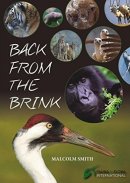
|
|
The Griffons of the Nebrodi Mountains / Grifoni Dei Monti NebrodiCannavale Alfonso
Historia Naturae
Bilinual: Italian / English
2013
A photographic portrait to the griffon population of the Nebrodi Mountains in Sicily, Italy.
|
 |
|
California Condors in the Pacific NorthwestJesse D'Elia and Susan M. Haig
Oregon State University Press
2013
"Despite frequent depiction as a bird of California and the desert southwest, North America's largest avian scavenger once graced the skies of the Pacific Northwest, from northern California to British Columbia. This important volume documents the condor's history in the region, from prehistoric times to the early twentieth century, and explores the challenges of reintroduction. Jesse D'Elia and Susan Haig investigate the paleontological and observational record as well as the cultural relationships between Native American tribes and condors, providing the most complete assessment to date of the condor's occurrence in the Pacific Northwest. They evaluate the probable causes of regional extinction and the likelihood that condors once bred in the region, and they assess factors that must be considered in determining whether they could once again thrive in Northwest skies."
|
Buy from amazon.co.uk 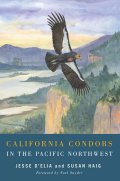
|
|
VultureThorn Van Dooren
Animal series
Reaktion Books
2011
192 pages, 56 colour illustrations, 55 other illustrations
"Vulture offers a concise history and enlightening new view of this much misunderstood bird. Vultures vary in type and size, and while some have a diet consisting of bone, others have gone almost completely vegetarian. It is interesting that this infamous bird very rarely, if ever, kills for itself. Inside human communities, vultures have occupied predictable roles such as disposing of the dead and officiating over human sacrifices, but they have just as often been viewed as courageous and noble creatures, indispensable in the containment of waste and disease, world creators and divine mothers. Thom van Dooren explores these tangled natural and cultural histories: from some of the earliest known Neolithic sites in which vultures are thought to have consumed the dead, through to contemporary efforts to reintroduce the bearded vulture into the Alps. This book highlights the rich diversity of vultures and the many ways in which people have understood and lived with them. Vulture helps us to appreciate and value these incredible winged scavengers, and is perfect for anyone with an interest in animals or conservation."
|
Buy from amazon.co.uk 
|
|
Return of the Condor: The Race to Save Our Largest Bird from ExtinctionJohn Moir
The Lyons Press
2007
"This fascinating volume takes a unique insider's look at the remarkable story of the fight to save a species from the brink of extinction. During the 1980's the condor population in America was down to only twenty-two individuals. It was at this make or break moment in the condor's remarkable history that a team of scientists pursued an unconventional and controversial means to save it. Return of the Condor is a stunning and inspiring look at the passion and courage of these scientists, and the controversy surrounding their exceptional plans to save one of the world's most beautiful and majestic creatures."
|
Buy from amazon.co.uk 
|
|
California Condors in the 21st CenturyEditor: Allan Mee and Linnea S Hall
Nuttall Ornithological Club / American Ornithologists' Union
2007
"The California Condor (Gymnogyps californianus) has long remained an enigma, disappearing for 15 years before reintroductions began in 1992. Here, the authors document efforts to re-establish viable populations of Condors in the wild, providing the most comprehensive and expert analysis of the species' status up to the end of 2005. Several chapters are devoted to the most pervasive limiting factor, lead poisoning, while the others investigate reasons for poor nest success of Condor populations; population genetics; captive rearing; and critical reviews of the successes and failures of the recovery effort. This volume is likely to become the major reference handbook on Condor biology, and will act as a blueprint for future conservation efforts for the Condor and other critically endangered bird species."
|
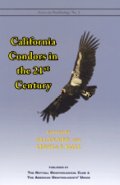 |
|
Condors in Canyon Country: The Return of the California Condor to the Grand Canyon RegionSophie A.H. Osborn
Grand Canyon Association
2007
"The California condor is one of the most majestic birds ever to have graced the skies. In the early 1980s it was a species that was technically extinct - there were only 22 known individuals in the world, all in California. Thanks to an incredible captive-breeding program, their numbers have increased dramatically, and dozens now fly free in the Californian sun. "Condors in Canyon Country" is an intelligent, engaging, and heartfelt story of the groundbreaking fight by scientists and condor enthusiast to save this magnificent creature from extinction. With its stunning full-colour photography of these huge birds flying free once again, this is a must-read for anyone passionate about endangered species and what we must do to save them."
|
Buy from amazon.co.uk 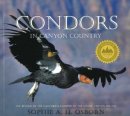
|
|
Condor: To the Brink and Back: The Life and Times of One Giant BirdJohn Nielsen
HarperCollins
2006
"The California condor has been described as a bird "with one wing in the grave." Flying on wings nearly ten feet wide from tip to tip, these birds thrived on the carcasses of animals like woolly mammoths. Then, as humans began dramatically reshaping North America, the continent's largest flying land bird started disappearing. By the beginning of the twentieth century, extinction seemed inevitable. But small groups of passionate individuals refused to allow the condor to fade away, even as they fought over how and why the bird was to be saved. Scientists, farmers, developers, bird lovers, and government bureaucrats argued bitterly and often, in the process injuring one another and the species they were trying to save. In the late 1980s, the federal government made a wrenching decision - the last remaining wild condors would be caught and taken to a pair of zoos, where they would be encouraged to breed with other captive condors. Livid critics called the plan a recipe for extinction. After the zoo-based populations soared, the condors were released in the mountains of south-central California, and then into the Grand Canyon, Big Sur, and Baja California. Today the giant birds are nowhere near extinct. The giant bird with "one wing in the grave" appears to be recovering, even as the wildlands it needs keep disappearing. But the story of this bird is more than the story of a vulture with a giant wingspan - it is also the story of a wild and giant state that has become crowded and small, and of the behind-the-scenes dramas that have shaped the environmental movement."
|
Buy from amazon.co.uk 

|
|
Raptors of the World (Concise edition)James Ferguson-Lees and David Christie
Illustrations: Kim Franklin, David Mead and Philip Burton
Christopher Helm
2005
"Raptors of the World (Helm, 2001) is the definitive handbook to this most popular group of birds. This new field guide uses all of the plates from Raptors of the World, with a concise, revised text on facing pages, to create a conveniently-sized, lightweight field reference covering all 340 raptor species. Several of the plates have been reworked and repainted for this guide. The book also has an updated colour distribution map for each species. Much of the extensive introductory material has been retained in this guide, with the addition of a complete species list containing all subspecies and brief details of their ranges. Armed with this guide, birders will be able to identify with confidence any raptor encountered anywhere in the world."
|
Buy from amazon.co.uk 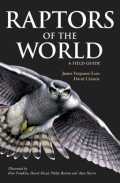
|
|
Introduction To The California CondorNoel Snyder and Helen Snyder
California Natural History Guides, Vol 81
University of California Press
2005
"The story of the California Condor - an awe-inspiring symbol of wilderness - is one of the most dramatic and contentious in conservation biology. Huge scavengers with wingspans reaching more than nine feet, Condors declined by 1985 to just nine individuals left in the wild. At that point, under a highly controversial program, the last birds were brought into captivity to create a population that could eventually be reestablished in nature. This engaging book, written by two scientists who were intimately involved with the Condor conservation effort, tells the full story of the California Condor, from the bird's evolution and biology to its captive breeding and subsequent releases, and its uncertain future. It introduces the largest soaring bird in the continental United States to a broad audience and at the same time presents an important case study of a critically endangered species."
|
Buy from amazon.co.uk 
|
|
The Raptor Almanac: A Comprehensive Guide to Eagles, Hawks, Falcons and VulturesScott Weidensaul
The Lyons Press
2004
"The Raptor Almanac is a comprehensive reference to the 310 species of diurnal (day-flying) birds of prey worldwide, including hawks, eagles, falcons, and vultures. For the birder or naturalist who wants to go beyond the fundamentals, and especially for anyone fascinated by birds of prey, The Raptor Almanac gathers virtually every important fact about these birds in an accessible and entertaining manner. This inspiring, all-inclusive book covers raptor evolution, taxonomy, behaviour, courtship and breeding, nesting, migration, human/bird interaction, environmental threats, and conservation efforts - from the well-known programs to reintroduce the California condor and peregrine falcon, to lesser-known efforts to preserve the snail kite and the ferruginous hawk."
|
Buy from amazon.co.uk 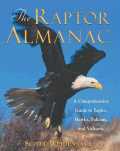
|
|
Avian Desert PredatorsW.E. Cook
Adaptations of Desert Organisms Series
Springer
2003
"Birds are not particularly well suited to desert life. Unlike mammals, they are generally active during the day and do not usually go underground to escape the intense desert heat. Among the few types of birds that have successfully invaded the desert ecosystem are the predators. Many species of hawks, owls, roadrunners, vultures, and shrikes survive very well in deserts. What attributes make this group especially suited to desert life? How have they augmented their abilities to cope with the harsh constraints imposed by the desert habitat? These are among the issues explored in this new volume, which brings together much of the current research on adaptations of avian desert predators."
|
Buy from amazon.co.uk 
|
|
Vultures Of Georgia And The CaucasusLexo Gavashelishvili
Georgian Center for the Conservation of Wildlife
2002
"Describes 4 species of vultures - Egyptian Vulture, Griffin Vulture, Cinereous Vulture and Lammergeier - providing comprehensive information on their biology, ecology, distribution, habitats and conservation management in Georgia and Caucasus. The book is illustrated with original high quality colour photographs, and maps from satellite telemetry studies."
|
Buy from amazon.co.uk 
|
|
Raptors of the WorldJames Ferguson-Lees and David Christie
Illustrations: Kim Franklin, David Mead and Philip Burton
Christopher Helm
2001 (revised 2005)
"This covers the world's 313 raptor species. 112 colour plates show adult, juvenile and some immature plumages plus main geographical races. The accompanying text provides additional identification information such as length, wingspan, male-to-female proportion, shape and flight. Further species information includes distribution and movements, habitat, voice, food, socio-sexual behavoir, breeding and population information. The text includes line drawings illustrating specific points about identification and behaviour. A concise edition of this book, Raptors Of The World: Field Guide, was published in 2005."
|
Buy from amazon.co.uk 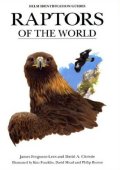
|
|
Vultures & CondorsDavid Houston
Colin Baxter Photography
2001
Also published as Condors & Vultures
"Vultures and condors are among the most abundant and spectacular birds of prey in the world. Masters of gliding flight, they survive by being supremely efficient scavengers, rather than by hunting and killing prey for themselves. David Houston has studied vultures and condors in the field for over thirty years, In this vividly illustrated wildlife portrait, he explains how they have had to acquire remarkable adaptations for their specialised way of life, and why in many places, these large birds are highly endangered by man's activities."
|
Buy from amazon.co.uk 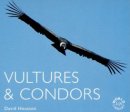
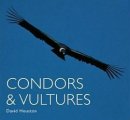
|
|
The California Condor: A Saga of Natural History and ConservationNoel Snyder and Helen Snyder
Princeton University Press
2000
"As the largest flying bird of North America, and one of the most endangered, the California Condor has been a source of tremendous interest and awe. This book offers up-to-date information on both the biology and conservation of the condor, as analyzed by the two most knowledgeable field biologists to have studied the species. The authors present first a thorough review of the history of condor studies and conservation efforts, then a detailed examination of the biology and recent decline of the species, and finally a hopeful plan for ultimate restoration of the species as a viable member of wild ecosystems. The book is illustrated with over a hundred superb color photographs covering numerous aspects of natural history of the species and recent conservation efforts on its behalf. Conservation of the California Condor has always been highly controversial, and this book does not shrink from controversy. Instead it offers a broad and insightful, but nevertheless sympathetic treatment of the many political conflicts of the past century."
|
Buy from amazon.co.uk 
|
|
Vulture: Nature's Ghastly GourmetWayne Grady
Greystone / Sierra Club Books
1997
"From the bald, scarlet-headed turkey vulture to the colorful king vulture with its red-rimmed eyes to the giant California condor, vultures have been reviled as disgusting, hideous scavengers that greedily feast on rotting carcasses. Here VULTURE combines a fascinating, authoritative text with 60 dramatic color photos to examine the myth and reality of this unique creature."
|
Buy from amazon.co.uk 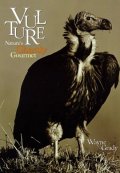
|
|
The Vultures of AfricaPeter Mundy, Duncan Butchart, John Ledger, Steven Piper
Academic Press / Acorn Books
1992
"This book is intended for all bird enthusiasts, conservationists and ornithologists, the informed reader and the collector of fine works of Africana. Vultures have always evoked a strong response in people, whether it be one of reverence, as in the Ancient Egyptians or the present day "vulture watchers", or of aversion, as shown by some of the explorers and hunters of the last century. In this book, Dr Peter Mundy and his fellow authors set out to answer every conceivable question on the biology and lifestyles of these birds, in a text that is a refreshing departure from traditional bird monographs in terms of its lively and contentious style. The book, nevertheless, remains comprehensive in its approach and is full of new insights from a combination of the authors' personal experiences and a thorough review of all the available literature. The book is divided naturally into four parts. First, the vultures are introduced, from the evolutionary standpoint, both globally and in an African context, so that the world's 22 species are grouped and defined. Then, the African vultures are placed under the spotlight. Each species account encompasses the history of the bird's discovery, its complete identification, distribution and preferred habitats. Its behaviour, foraging and feeding, breeding and current conservation status are examined in detail. The third part reveals the diversity within this group of scavenging birds by taking a comparative look at their foraging, feeding, socializing and breeding habits. The final section documents the interrelationship of vultures and humans in Africa and modern-day conservation issues and strategies are discussed in depth. Each species is illustrated by Duncan Butchart in a watercolour painting of the adult in its habitat. Over 100 of his pencil sketches also adorn the text. More than 130 photographs, many from leading wildlife photographers, capture the birds throughout the continent: we see them flying, feasting or fighting at a carcass, in "threat" postures, or relaxing after feeding, on their nests and rearing their young and through the eyes of history, in the paintings of the San and of the ancient Egyptians. A unique feature is the reproduction of 18th and 19th century "type specimen" paintings. In addition, numerous maps and diagrams lend visual immediacy to the absorbing text."
|
Buy from amazon.co.uk 
|
|
In Condor CountryDavid Darlington
Houghton Mifflin
1987
"Eastern San Luis Obispo County is an arid region of rolling grassland midway between San Francisco and Los Angeles that has historically been a favorite foraging ground for the rarest of North American birds - the Californian Condor. This book is an exploration of the character and history of that landscape, and of two brothers who are nearly as unique as the bird with which they have come to be associated."
|
Buy from amazon.co.uk 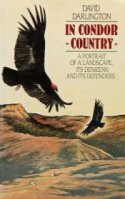
|
|
Vulture Biology And ManagementEditor: Sanford R. Wilbur and Jerome A. Jackson
University of California Press
1983
|
Buy from amazon.co.uk 
|
|
The Comparative Biology of Southern African VulturesP.J. Mundy
Vulture Study Group
1982
|
Buy from amazon.co.uk |
|
The Californian Condor: A Look At Its Past And FutureSanford R. Wilbur
North American Fauna, Number 72
Fish & Wildlife Service
US Department Of The Interior
1978
From the abstract: The California condor (Gymnogyps californianus) was studied on about 900 field days between 1966 and 1976. In addition, some 1,000 items of literature, specimen records from 56 museums, and 3,500 reports of condor sitings by cooperators were analyzed. Distribution does not appear to have changed significantly since the 1930's, although there are some areas within the species' range that have become unusable. Two subpopulations of condors exist, one occupying the Coast Range Mountains, and the other found in the Transverse Ranges, Tehachapi Mountains, and Sierra Nevadas. There are well-defined seasonal movements within each sub- population area. The surviving, wild population was estimated to be 45 condors in 1976, a decline of about 20% since 1965 and probably over 50% since 1940. No reliable population estimates are available before the 1940's, but it appears that a major decline occurred between 1880 and 1920. Shooting and specimen collecting were the primary causes of the early decline, and shooting continued as a major problem into the 1960's. Recent declines are a result of inadequate production; annual surveys indicate that only 16 young have been produced since 1968. Causes of low production are unknown but inadequate food supply, environmental contaminants, and disturbance from air traffic and petroleum extraction are implicated. A recovery plan for the condor is in operation; steps have been taken to supplement food supplies, preserve nesting and roosting habitat, and protect surviving birds from man-caused mortality or disturbance.
|

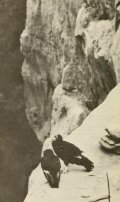
 |
|
The California CondorCarl B. Koford
Dover Publications
1953
This work was possible first published as a research report in 1953 and then as a book at a later date with the cover shown.
|
Buy from amazon.co.uk 
|
|